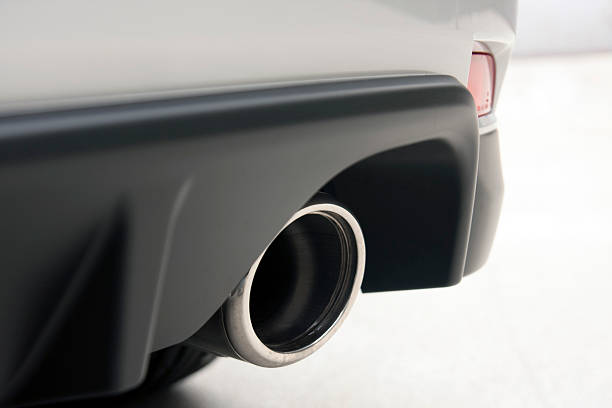Decat Pipe, Exhaust BackBox
Does downpipe make turbo louder?
Automobile enthusiasts are no strangers to the captivating blend of speed and sound. When it comes to turbocharged engines, the quest for performance enhancement often intersects with the desire for an attention-grabbing exhaust note. The symphony of a turbo spooling up and releasing its energy is music to the ears of those who revel in the world of horsepower and torque. One particular modification that frequently stirs up discussions in this realm is the installation of a downpipe. In this comprehensive exploration, we delve into the intriguing question: Does a downpipe make your turbo louder? We’ll also dissect related aspects, including the impact on sound, methods to amplify turbo acoustics, the role of catless downpipes, and the nuances of crafting an appealing turbo sound.
Does a Downpipe Increase Sound?
A downpipe serves as a vital conduit in a turbocharged engine’s exhaust system, connecting the turbocharger’s exhaust housing to the remainder of the exhaust system. While its primary purpose is to bolster exhaust flow and optimize engine performance, the alteration of exhaust dynamics has undeniable implications for the auditory experience. Swapping out the stock downpipe for an aftermarket counterpart modifies the trajectory of exhaust gases, potentially affecting the sound produced by the turbocharger.
An aftermarket downpipe can indeed contribute to an augmented turbo noise and exhaust note. As exhaust gases flow more freely through the system, the turbocharger’s spooling sound might become more prominent, lending a melodious element to the driving experience. This subtle yet perceptible change is often a welcome alteration for enthusiasts seeking both performance and a distinctive sonic profile.
How Can I Make My Turbo Louder?
If your aspiration is to amplify the symphony of your turbocharged engine, several avenues can be explored:
Upgraded Downpipe
As previously mentioned, the replacement of your stock downpipe with an aftermarket variant can exert a noticeable influence on exhaust sound. The enhanced exhaust flow can give rise to a more resonant turbo spool and an enriched exhaust note.
Exhaust System Customization
A holistic approach to exhaust sound modification entails a complete overhaul of the exhaust system. By upgrading components such as the mid-pipe and muffler, you can substantially transform the auditory character of your turbocharged vehicle.
Tuning Expertise
Fine-tuning the engine’s electronic control unit (ECU) can serve as an influential tool for shaping the acoustics of your turbocharger. Tweaking parameters like ignition timing and boost levels can wield an impact on both the volume and tone of the turbo’s spooling sound.
Will a Catless Downpipe Make My Turbo Louder?
The notion of a catless downpipe, devoid of a catalytic converter, frequently garners attention for its potential to heighten exhaust noise. With fewer restrictions on exhaust flow, a catless downpipe can engender a more raucous and aggressive exhaust note. However, it’s imperative to acknowledge that such a modification might carry implications for emissions compliance and legality. Regulations governing emissions vary by region, rendering it essential to ascertain the permissibility of catless setups in your area.
What Makes a Turbo Sound Better?
Crafting an alluring turbo sound necessitates a multifaceted approach. The following factors contribute to the creation of a turbocharged symphony that resonates with enthusiasts:
Turbocharger Configuration
The design and specifications of your turbocharger wield a significant influence on the emitted sound. A larger turbocharger equipped with a substantial compressor wheel is more likely to produce an intensified spooling noise.
Intake and Exhaust Harmonization
The coordination between an enhanced intake system and a meticulously designed exhaust is pivotal in shaping the overall sound profile. The alignment of these components amplifies the auditory spectacle.
Material Matters
The composition of exhaust components is a determinant of tone and resonance. Opting for high-quality stainless steel components fosters a crisper and more resonant sound compared to inferior materials.
The interplay between downpipes and turbo sound is a multifaceted realm where performance and acoustics converge. While the installation of an aftermarket downpipe can contribute to a heightened exhaust note, it is not the sole factor at play. Variables like exhaust system modifications, ECU tuning, and the presence of catalytic converters also play pivotal roles in shaping the auditory landscape. For those pursuing a synthesis of performance and sound, diligent research, expert consultation, and compliance with local regulations are paramount. Ultimately, the pursuit of an enchanting turbo sound is a personalized odyssey that reflects individual automotive inclinations. The allure of a turbocharged engine’s melodious roar continues to captivate enthusiasts, reminding us that the journey is as captivating as the destination itself. Whether cruising down the open road or pushing the limits on the track, the harmony of performance and sound amplifies the automotive experience, creating a symphony of power that resonates deeply with every rev of the engine.








